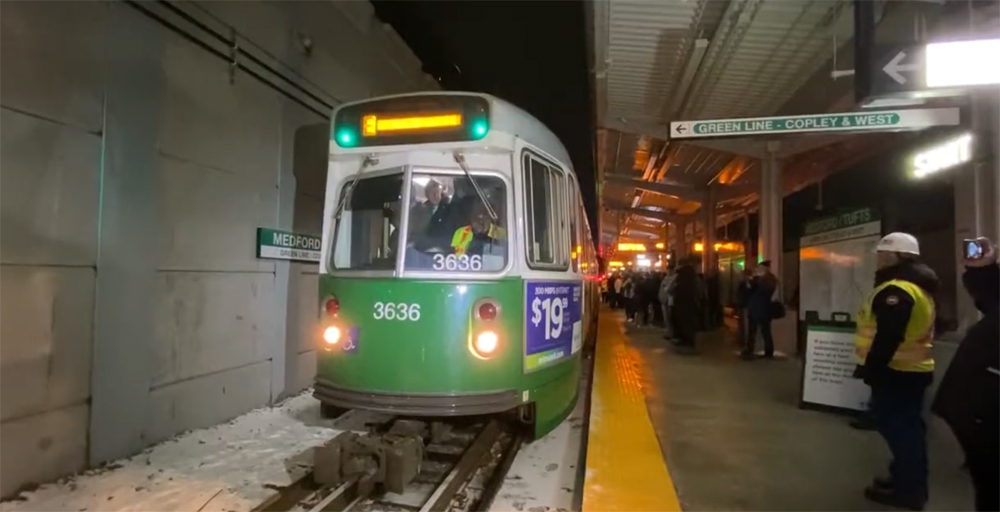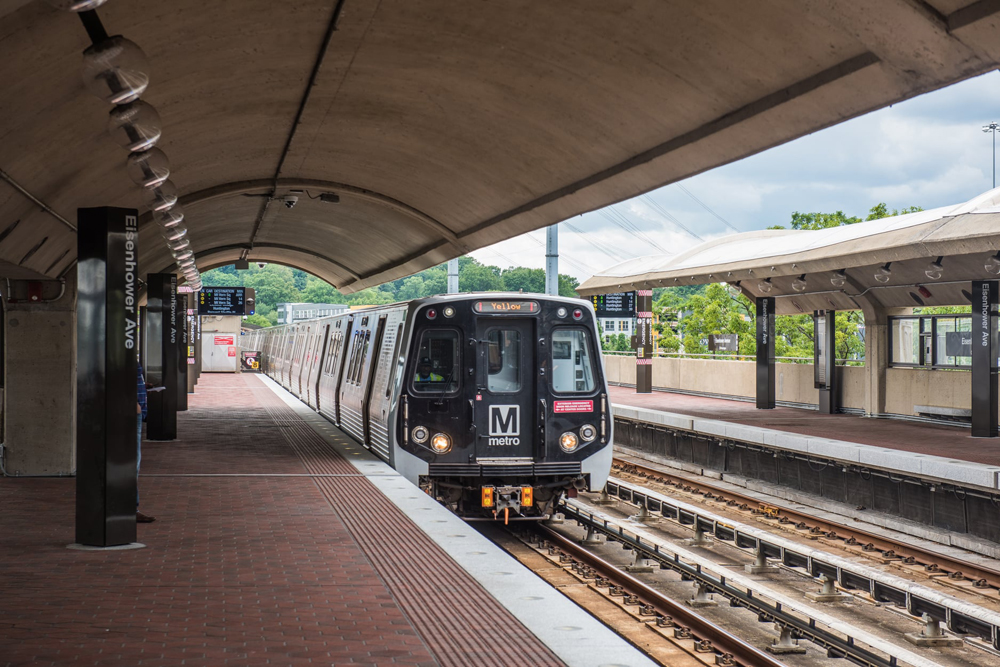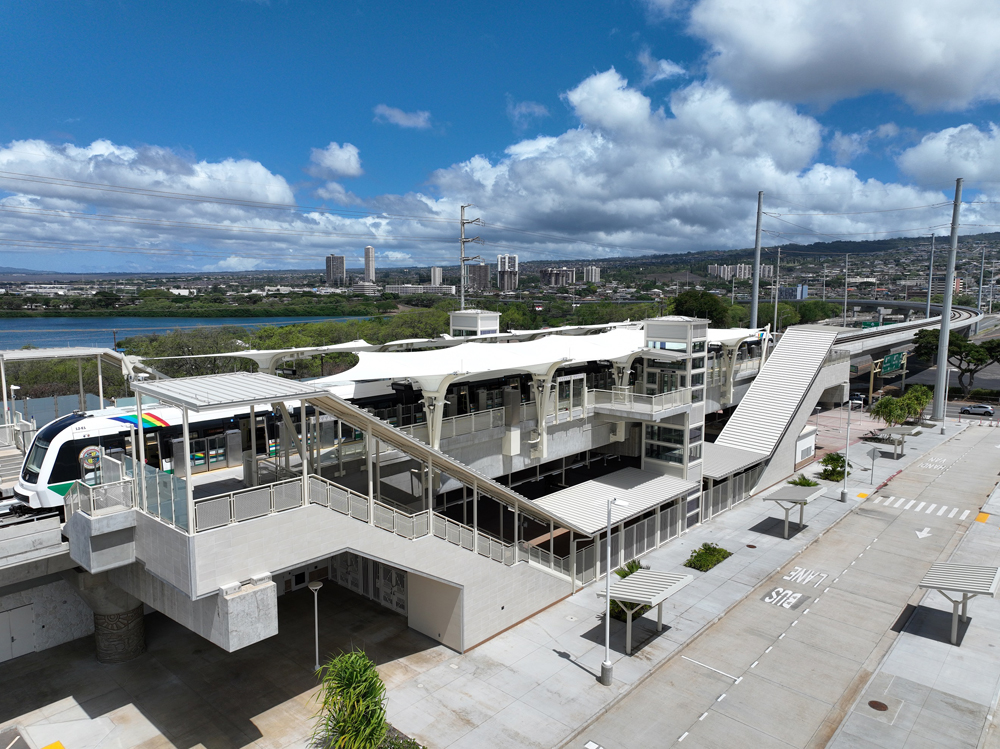
It seemed transit’s biggest headlines in 2023 were generated for all the wrong reasons.
Two systems in particular — the Massachusetts Bay Transportation Authority and Washington Metropolitan Area Transit Authority — continued to deal with major administrative and operational issues. On top of that, WMATA — facing a massive operating deficit — issued a budget proposal for the coming fiscal year that its own general manager said would have customers “paying more for much less-quality service.”
Even the opening of new systems — usually a cause for celebration and optimism — were tinged with misgivings, to say the least. In Honolulu, the automated, mostly elevated Skyline light rail system opened more than two years late, after seeing its cost more than double. In Montreal, another automated light rail system, the Réseau express métropolitain, also opened behind schedule and over budget, but the larger questions are about its basic utility.
MBTA starts addressing track issues
The MBTA continues to work through the safety directives issued by the Federal Transit Administration in 2022, a process it now tracks on its website. But the deep-seated issues that led to those directives surfaced again in October, when the agency revealed a majority of its 4.7-mile Green Line extension was built with track out of gauge — and that the problem had first been detected, but not addressed, more than a year and a half before the extension opened.
Repairs to the extension are part of a massive project subsequently announced by the MBTA to eliminate all existing slow orders on its rail transit system — at the time, 190 covering 31.1 miles, or 23% of the system — by the end of 2024. That’s part of the agency’s effort to regain its footing under Phillip Eng, the former Long Island Rail Road president who became MBTA CEO in April. He faces an uphill battle, given an assessment late in the year that the agency’s state-of-good-repair needs have grown to some $24.5 billion.
Meanwhile, the MBTA also continues to deal with massive delays for its order for 404 subway cars from a local affiliate of Chinese manufacturer CRRC — an order that was to have been completed by September of this year, but now will run past the most recent estimated completion date of September 2026.
Budget issues add to WMATA woes

WMATA’s DC Metrorail system reached the end of 2023 facing drastic service cuts in the fiscal year beginning in July 2024. A proposed budget released in December to address a $750 million operating deficit would increase fares, reduce frequencies, shorten the service day, and close 10 stations. The agency would also eliminate almost half its bus lines and cut almost 2,300 jobs.
The potential cuts came as Metrorail continued its long struggle to recover from wheel defects that played a part in an October 2021 derailment and sidelined the Kawasaki-built 7000-series railcars that comprise the majority of its fleet. It was only this month that Metrorail deployed the first cars with wheels replacing those with the problem that caused them to shift slightly on their axles, the necessary repair to return the full 7000-series fleet to regular operation.
But that was hardly Metrorail’s only issue. In February, a man was killed after disembarking from a train when he was dragged by a dog leash caught in a doorway as a train left a station. The man’s service dog had not exited the train as it departed; the incident occurred about 450 feet from the operator cab and was not seen by the operator controlling the doors.
In March, an operator ran a train using Metro’s Automatic Train Operation system — out of service since 2009 — without authorization. He was caught when the train overran a platform, admitted to using the system out of curiosity, and did not return from a suspension. WMATA is seeking to restore use of the ATO system but the Washington Metrorail Safety Commission has had reservations. And, in an incident in late December 2022 that was not reported until January, a Metrorail operator was arrested and later fired for operated a train while intoxicated. A later Metro report found that the operator was at the controls for hours, and that a supervisor did not respond to the operator’s erratic performance well before his arrest.
New systems in Honolulu, Montreal

Honolulu’s Skyline — which gained that name just weeks before its June 30 launch — had a long, troubled, and expensive path to becoming the first new U.S. rail transit system since 1993. Originally supposed to cost $5.12 to billion and open in 2020, the estimated cost soared to as high as $12 billion before part of the line was dropped. It now is expected to be 2031 before the 18.75-mile line is completed. Along with problems in building the system, the expense reflects a light rail system with many characteristics more in keeping with heavy-rail rapid transit: the route is almost entirely on an elevated right-of-way, and sees trains operate at speeds up to 55 mph with an average speed of 30 mph.
The system launched with operations on a 10.75-mile, nine-station segment of what will eventually be a 19-station system. Heavily used during a free debut weekend, with almost 72,000 riders, it saw that number shrink to just 3,276 on the first day with fares. (The number was originally announced as 1,245 but later corrected by officials.) As of November, the system was averaging 2,772 riders per day. Officials were projecting average weekday ridership of 8,000 to 10,000 after a year of operation.
Montreal’s REM debuted with free rides on July 29-30 and its first regular service on July 31, about two years behind schedule. The initial operations, on a 16-6-kilometer (10-3 mile) route between Central Station and the southeastern suburb of Brossard, represent only a fraction of what will eventually be a 67-kilometer (41.6-mile), 26-station system projected to be complete in 2027 at a cost of C$6.9 billion. It has been praised in some quarters because it represents a new model for transit construction — privately funded, and owned and operated by Quebec public pension fund Caisse de depot et placement du Québec, it is meant to be a for-profit entity. It was built at a far lower cost and far faster than most public transit projects; even with delays, the first phase opened about seven years after the project was announced. Early returns saw it averaging about 30,000 riders per day.
But questions remain about the basic need for the system. A large portion of it replaced an existing EXO commuter rail line, suggesting it may have cannibalized existing operations for some of its projected 160,000 daily riders at full buildout, and an environmental review of the project argued it would do little to increase the number of commuters using transit. The project also took over the Mount Royal tunnel, used for commuter rail service since 1918, eliminating its availability for conventional rail service. That has created major routing issues for Canada’s proposed High Frequency Rail passenger project.
Prior News Wire reporting:
MBTA:
“Eng, former LIRR president, to become new MBTA general manager,” April 12, 2023.
“MBTA emphsizes communication in revised worker safety plan,” June 7, 2023.
“Dates still to be determined for CRRC delivery of long-delayed MBTA subway cars,” Aug. 26, 2023.
“MBTA Green Line extension was built with track out of gauge, faces significant repairs,” Oct. 19, 2023.
“MBTA plans to eliminate all slow orders on rail system by end of 2024,” Nov. 10, 2023.
“MBTA state-of-good-repair needs grow to $24.5 billion,” Nov. 16, 2023.
DC Metrorail:
“Man dragged by DC Metrorail train dies after dog leash is caught in door,” Feb. 16, 2023.
“Metrorail operator who used automated system is out, safety agency says,” April 12, 2023.
“New safety commision report revives questions about Metrorail operator certification,” Aug. 9, 2023.
“DC Metrorail to increase brake inspections as a result of September derailment,” Oct. 13, 2023.
“DC Metrorail begins wheel replacement on 7000-series cars,” Dec. 5, 2023.
“DC Metrorail faces major cuts under proposed WMATA budget,” Dec. 12, 2023.
Skyline:
“Honolulu rail project may finally see trains this year,” Jan. 20, 2023.
“Honolulu rail system to debut today,” June 30, 2023.
“Honolulu rail system well used during free trial, but numbers drop when fares begin,” July 10, 2023.
REM:
“Montreal light rail plans summer opening, promises no more delays,” April 24, 2023.
“Montreal’s REM light rail makes debut,” July 29, 2023.
“Montreal’s REM experiences bumpy first day,” Aug. 1, 2023.














After Labor Day 2023 WTOP reported a bit over 60% of DC office employees had returned to the office. There are WMATA’s missing riders.
The drop in transit ridership in USA is beyond catastrophic, at a time when aging systems need massive capital infusions. While daily O+M costs are rising, and no one can imagine pension costs.
We haven’t even gotten to the costs of retrofit for wheelchair access (trains and stations) and visual or auditory info systems for blind or deaf passengers. Who will pay for those?
I was trolling the ‘net and clicked on a Wikipedia article of my favorite transit line, which is Metra BNSF Railway. The drop in ridership is hideous. Let’s see what it looks like after the inevitable rounds of fare increases.
Numbers of voters are sick of this stuff and want subsidies to public transit reduced or eliminated. What’s changed is that we, the readers of these pages and the persons posting on these pages, we transit advocates, now we too are getting sick of the {surplus}.
Only God Himself can save these transit systems now, with their skyrocketing costs and declining passenger counts. I’m not God so I have only a partial plan to begin to address hese issues. Here is my plan: discontinue the federal teat. Make local/ regional transit the responsibility of state and local taxpayers, as it should be. Without the annual federal blood tranfusion, maybe the locals will wake up to their own mess and begin to work to solve it.